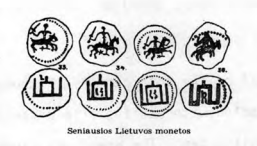Part I
The Greater Independence of the Nobility and the Growth of Moscovy
With Casimir there was the initiation of the line of grand princes of Lithuania, who were also the kings of Poland and had their permanent residence in Cracow. They tended to rule Lithuania simply by visiting the country or living there for a short period. Their absence helped to strengthen the self-government of the nobles who waged a stubborn diplomatic war for the western land the Poles had taken.
The Lithuanian nobles also began to be threatened by the emerging Duchy of Moscow, which had freed itself from the yoke of the Tartars and continued to push outwards, making a significant move westward when it subjugated the duchies by the Oka and Dneiper Rivers. Thus, Lithuania lost a third of the eastern part of its territory.
In the second half of the 16th century, Lithuania’s battles with Moscow were entangled with battles of a wider scope, involving the hegemony of the Baltic Sea. The Russians, along with the Tartars brought from the recently occupied Republic of Kazan, besieged the northern part of Livonia, or present day Estonia. As a result, in 1561 the last magistrate of Livonia, Gothard Kettler, gave Livonia to Lithuania for protection.
In 1563 the Russians occupied Polotsk, which was very close to the heart of Lithuania. They murdered the Benedictine monks, exiled captured Lithuanians to Moscow, and drowned the Jewish population in the Dauguva River. The cruelty of the Russians and their threat to the very center of Lithuania forced the Lithuanians to seek outside help, which they could only hope to receive from Poland. They agreed to negotiate a new union with the Poles, providing for the two states to be ruled by one king with the title of Grand Prince of Lithuania. Both states had to have a common senate and a common foreign policy. However, each had a separate treasury and each maintained its own form of government with its own armies and laws. In essence, the union did not change relations between the two states, and a federative existence remained.

